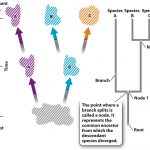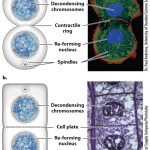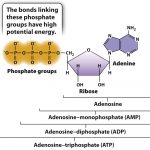When observing the frequency of mutations of one particular gene sequence across a population or species, it would be very uncommon to find a mutation. If one were to look at an entire human genome that contains millions of amino acid sequences, one will find that they are quite common on that scale. The frequency at which a mutation will occur has a positive correlation to the genome size. A mutation is simply a change in DNA that can occur randomly but could be caused by certain genetic or environmental factors. It is important to understand that a change in DNA is only considered a mutation when the change in DNA makes it past the repair and regulatory mechanisms. When we say mutations occur at random we mean they occur without any regard to the needs of the organism in question.Though most tend to see Mutations as only having a negative impact on life, they are one of the primary driving forces behind genetic variation, speciation, and evolution. Most mutations originate from somatic cells, which are continuously dividing and are therefore more susceptible to mutation. Some examples include skin, mucous membranes, muscle and skeletal tissues. Luckily these mutations stay within the individual and are not passed on to progeny. Luckily Only Germ-line mutations can be passed down to progeny in mammals. Some somatic mutations in plants can be passed down to progeny as long as the plant produces viable offspring.
There are many different kinds of mutation that can affect a genome on both small and large scales. The small scale mutations include point mutations, insertions and deletions, and transposable elements. They are considered small because they normally only affect one particular nucleotide base pair or protein (if anything at all). Point mutations are changes to a single nucleotide within a gene. In most cases (with humans), the mutation goes unnoticed without any phenotypic changes because the majority of codons in our genome have no known function. Sometimes the base pair does not even change. A point mutation that does not change a nucleotide base pair is a synonymous (aka silent) Mutation. One that does change the sequence is called a nonsynonymous mutation and may or may not have any detrimental effects depending on where the mutation occurred and if it encodes for a protein. A nonsense mutation is of the more dangerous kinds. They are mutations that cause an amino acid sequence to change, resulting in a STOP codon to appear when it should not. If the sequence encodes for a protein, it will be defective. Transposable elements are amino acid sequences that can insert themselves into an open sequence and are also expected to negatively impact gene expression or translation.
Insertions and deletions are particularly dangerous because inserting an unnecessary base pair into a strand of DNA or deleting a sequence that should be there will cause changes in the genome all the way downstream, resulting in loss of function or alteration of proteins. Normally a cell will not survive loss-of-function mutations of this type.
The large scale mutations include gene duplications, inversions, nondisjunction, reciprocal translocations etc. A duplication occurs when a whole region of a chromosome is present two times, and a deletion is when part of a chromosome is not present at all. Reciprocal translocations occur when two segments switch with each other and can eventually lead to complications during recombination in meiosis. Lastly, inversions occur when a chromosome segment is inserted opposite to how it is supposed to be.
Overall, Mutations aid in genetic diversity, but can also be dangerous. Luckily the most dangerous mutations such ad deletions, nonsense, and frameshift mutations are not passed down to progeny because the cell or organism in question probably wont live that long.
Biology: How life works (2nd ed.). (2017). In B. A. Berry Andrew, Biology: How life works (2nd ed.) (p. CH 14). McGraw Hill, NY: W. H. Freeman. Retrieved from http://www.macmillanhighered.com/launchpad/morris2e/4909413#/ebook/item/MODULE_bsi__F4951CED__2971__4486__BC4F__E109B2EE87D4/bsi__2ED633B9__F1E8__4C6C__82AA__0633C0C9F474?mode=Preview&toc=syllabusfilter&readOnly=False&renderIn=fne



